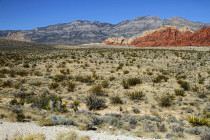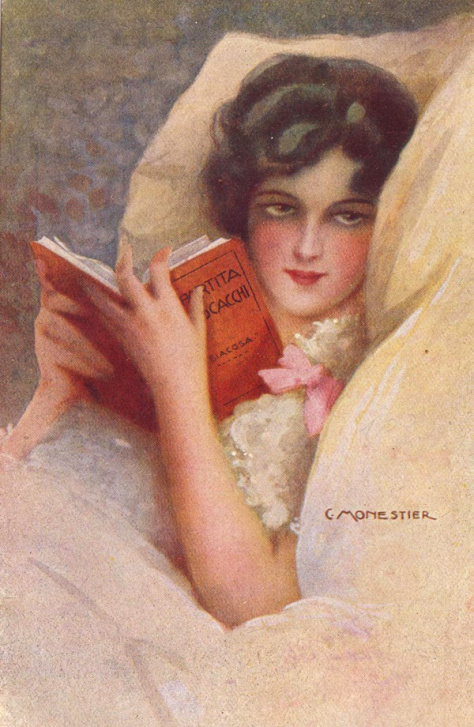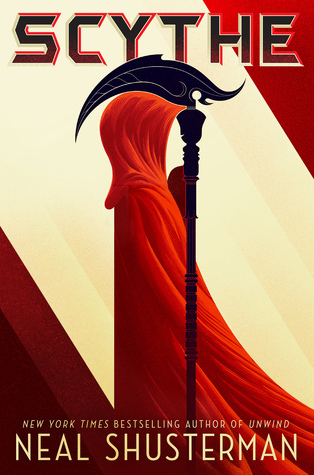Whilst those in America wait for the Hedy Lamarr documentary ‘Bombshell’ to be released in selected cinemas, today I thought I would review over the biographies available. Considering the fact that ‘Bombshell’ is based on one of these books, reading them might help ease your excitement for its anticipated release.
Ecstasy and Me.
(Published in 1966.)
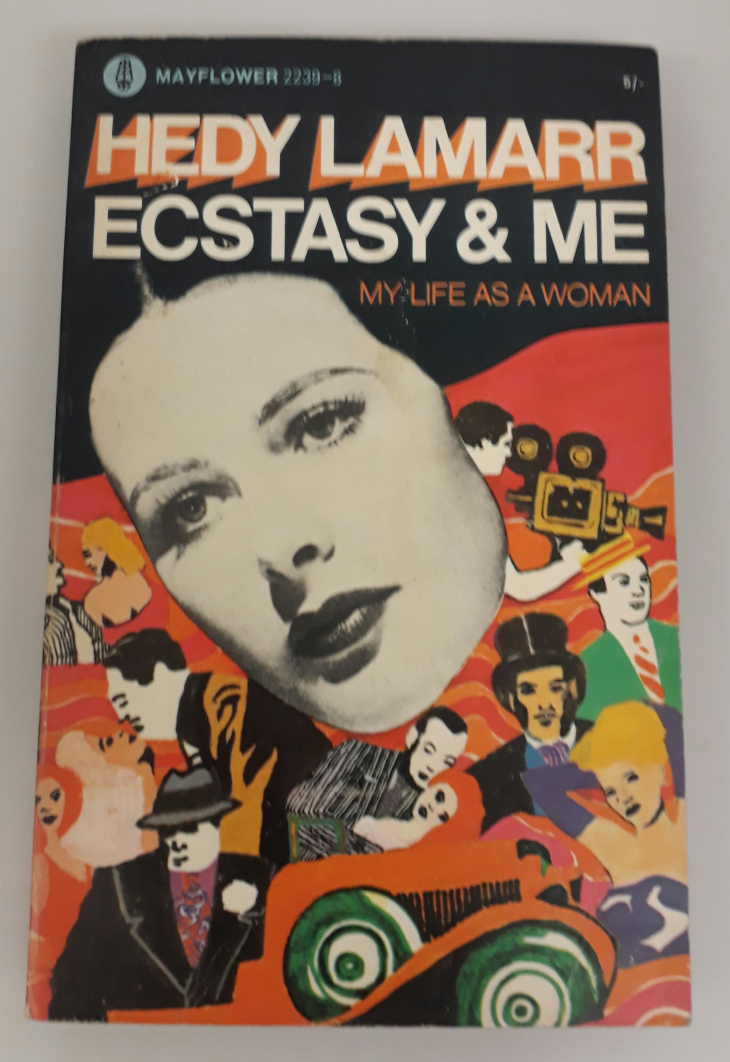
My copy of the book is a UK first-edition paperback which was published in 1967.
This book when first released caused quite a scandal. Even though the book states that’s it’s an autobiography, it was actually ghost-written by Leo Guild and CY Rice. The book was conducted through Hedy being recorded on tape discussing her life story and her recorded interviews were taped by CY Rice. Then on April 17th (before publication) Hedy signed her contract which stated that she read the entire contents of the book. It turns out that when she did finally read it, she hated it and knew it would kill any chances of a revival of her Hollywood career.
So you’re probably thinking ‘if it’s full of lies and maintains a mentality of that of a tabloid, why would I want to read this?’ You probably won’t however I found it helpful to read, especially when I was reading the biographies because it helped me to understand contextually the facts around Hedy’s life.
The book itself does start off extremely odd as there is a mini-preface by Dr. Phillip Lambert (a psychologist) and then some prologue by J. Lewis Bruce, M.D. I mean, are they even real people? They just go on to explain that Hedy is oversexed and that the book is fascinating because of it. I mean, in this day and age the descriptions are not detailed like something from a BDSM novel however they are over excessive. And the thing is that hardly any of these stories have never been corroborated as being the truth.
One thing biographers do agree on is the fact that there is factual information in there, regarding nonsexual matters, but they are incorrect. Another thing that’s agreed upon is that Hedy’s voice, the way she spoke about herself, was present during the book. This is most likely due to the recordings the ghost-writers had which are now mysteriously lost.
On October 3rd 1966, ‘Ecstasy and Me’ went on sale and became a sell-out hit. It ruined any chances of a Hollywood revival and as a result, Hedy filed a lawsuit and proclaimed she never wrote the thing. Her friend Robert Osbourne stated in Stephen Michael Shearer’s biography that “she wanted money…” and money she got, a mere $80,000 for her ‘life story’.
Overall I recommend his only if you were thinking of reading more books based on Hedy’s life (except ’What Almost Happened to Hedy Lamarr: 1940-1967’ because it’s full of b***s***.) Anyway, this book is also given an insight into the tone and way Hedy would speak of herself however take this with a pinch of salt. The countless times I have seen quotes being taken as fact from this book annoys the hell out of me so if you want to read this book, you have been warned.
‘Hedy Lamarr: The Most Beautiful Woman in Film.
(Published in 2010.)
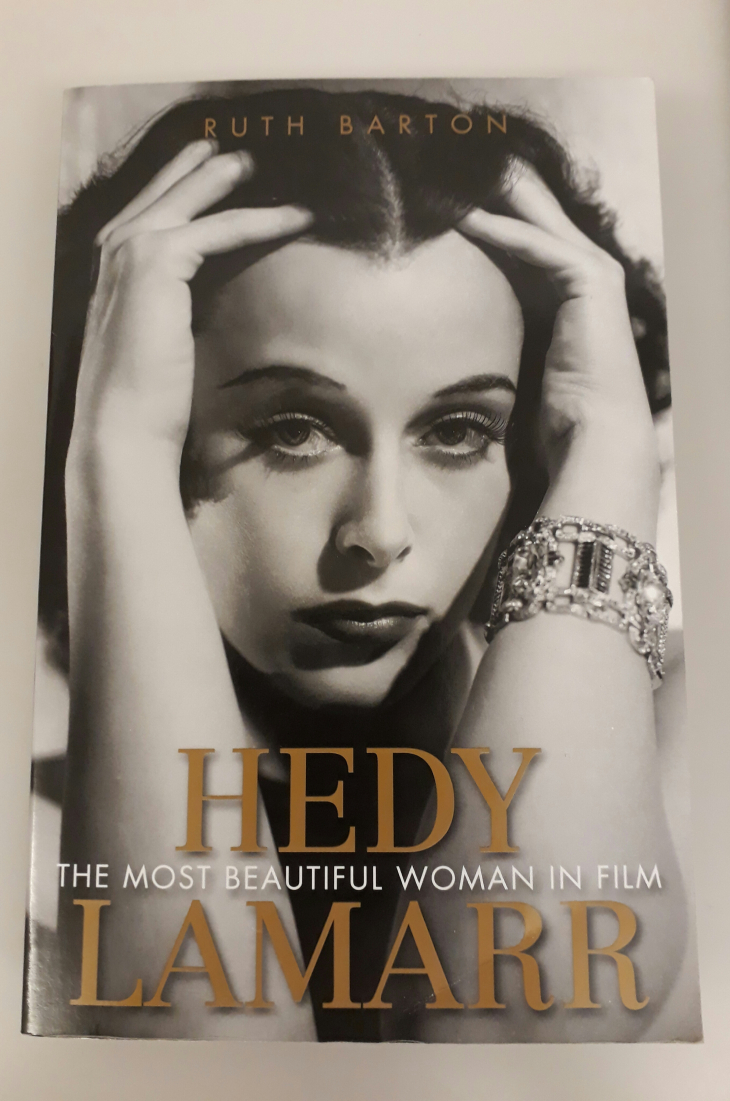
My copy of Ruth Barton’s Biography, paperback edition.
Ruth Barton’s biography is the first of two which are published in 2010. It was produced as part of a series of books from the University of Kentucky Press which included works on Billy Wilder and Mae Murray. The way she sets up her Hedy’s story is unique to say the least.
She starts off with writing a foreword entitled Waxworks. Here, she sets up what her argument is through this true story. In 1973, thirteen statues were demolished at the Hollywood Wax Museum, including Hedy Lamarr, who was then melted down only to be replaced by Angelina Jolie’s Lara Croft. She then sets up that she’s going to explore her life in relation to the fellow Austrian and European exiles in Hollywood. She does explore that however once that moment in her life is over (around the mid-late 40s) that argument fell short there.
For me, I found the book to have a strong start. She talks about new information surrounding her life especially her pre-famous actor Austrian days. She also goes into great detail around her invention, something which I’ve seen through an essay she previous wrote for another book. Her writing is very much for the film buff because she always goes into detail on productions, the price, the actors relationships, the audience reception and all things related to films itself. However, I felt that towards the period regarding the 1950s/60s the book started to lose its appeal.
The fact that towards the end, it became quite generic, especially in stating like ‘Hedy states… (quotes from ‘autobiography’) and stops acknowledging that its ghost written, just like she did with John Loder’s too. Her sources are predominantly secondary, which were either taken from a book or a newspaper clipping.
Overall, I’d recommend this one if you’re more interested in film history. I personally feel like although this does deal with certain aspects of her personal life, they often glossed over to make room in order to discuss the films (except with the invention which takes up a whole chapter.)
Beautiful: The Life of Hedy Lamarr.
(Published in 2010.)
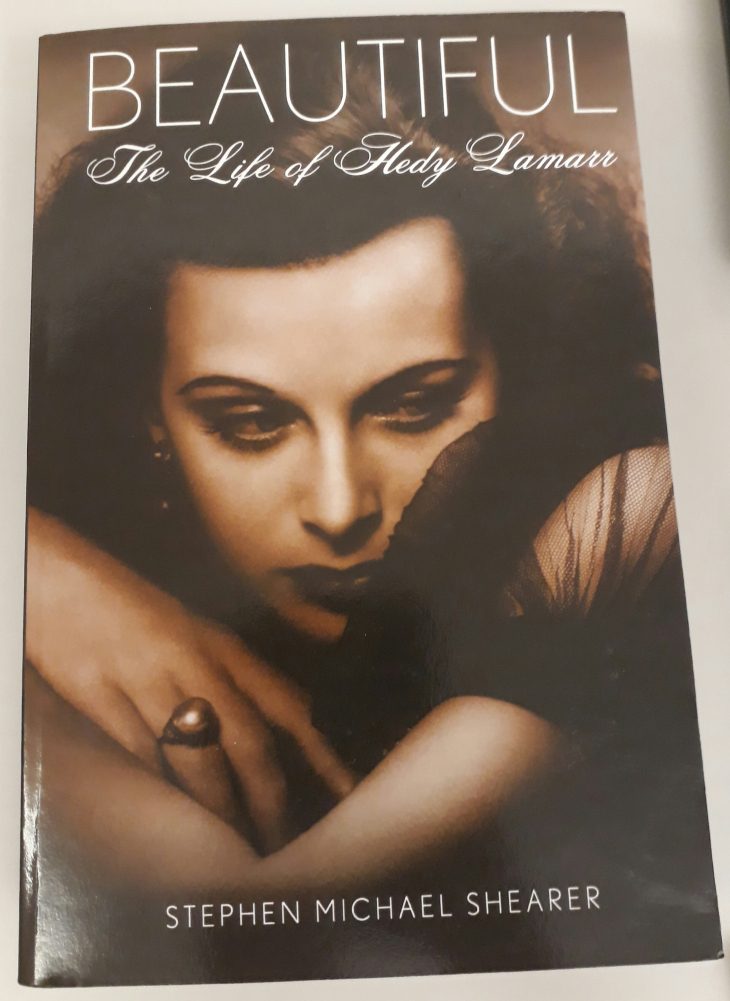
My copy of Stephen Michael Shearer’s biography, paperback edition.
Stephen Michael Shearer’s book is the second to be published in 2010. His book contains a foreword by the late Robert Osbourne (who was a good friend of Hedy’s) and an introduction. Here it is implies that his argument is to try and tell Hedy’s story as truthfully as possible, to remove the enigma that surround her life.
Initially, when I would read reviews of this book, people would always proclaim that the book doesn’t mention anything about her being an inventor. This put me off from reading it however I am here to tell you that it does, it’s that there isn’t a whole chapter dedicated to it. Instead, he interweaves it in relation to her life which to me reflects the hectic nature of life.
I personally prefer this book because it balances the films but it talks more about her life. The fact that he went out of his way to find primary resources, whether that be from Robert Osbourne or Denise ‘Dee-Dee’ Loder-DeLuca helped to give this book so much new information regarding Hedy. I also love the fact that he sticks up for her acting more than Ruth Barton does. Ruth Barton acknowledges she’s a good comedian but stated of her American debut in ‘Algiers’ she couldn’t act. Yet Stephen Michael Shearer goes on to say that ‘she knew she didn’t need to act because her beauty and face would do all the talking’. (Sounds like something I’d say to be honest.) I always do get annoyed when people say she can’t act because at the end of the day she did train with Max Reinhart, one of the most prominent European directors.
Overall, I’d recommend this one of you want to learn more about Hedy’s life in general. I feel like the reason he may have not gone into much detail regarding the invention was maybe because he didn’t understand all too well and therefore tried not to explain, for fear of a mistake. The fact that there is some wonderful primary material being produced too makes it all the more interesting, especially as this and Ruth Barton’s came out in the same year.
Hedy’s Folly: The Life and Breakthrough Inventions of Hedy Lamarr the Most Beautiful Woman in Film.
(Published in 2011.)
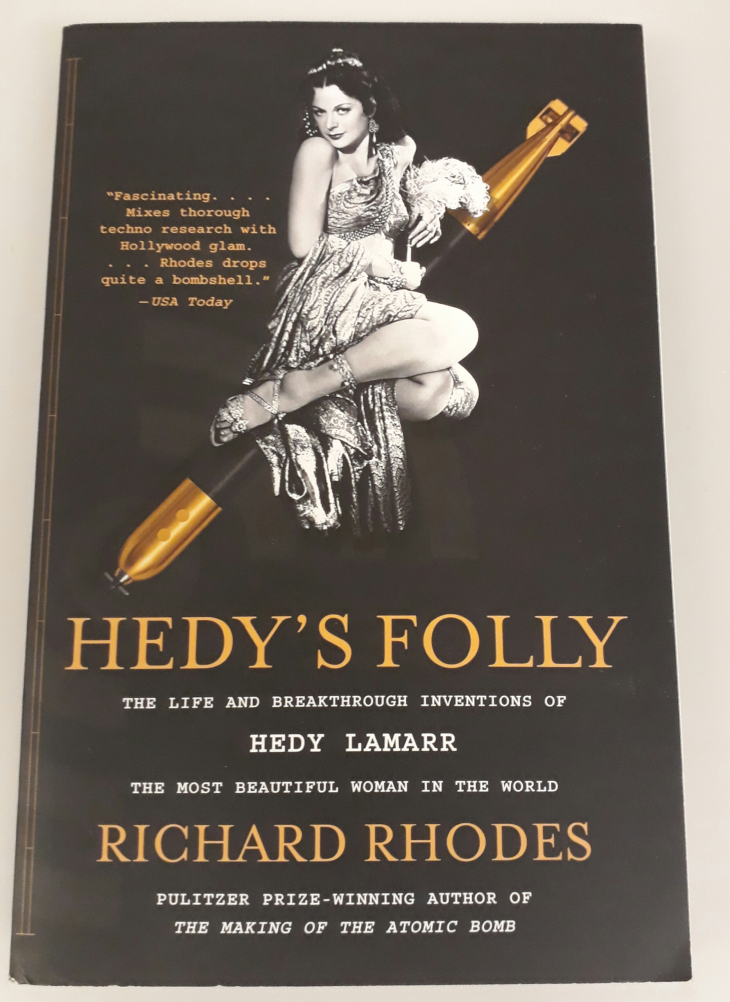
My copy of Richard Rhodes biography, paperback edition.
The last book is the one which the new documentary ‘Bombshell’ draws inspiration from. The book from Richard Rhodes concerns both Hedy Lamarr and George Antheil, their lives before, during and after the making of their patent-approved invention.
The story splits into each inventor, first George and then Hedy, and the first section specifically talks about their lives before the invention. It then goes onto discuss the collaboration process between these two and finally end the story with an afterword of sorts of post-invention and recognition.
I love the fact that the author traces the history of the invention, in relation to the inventors, especially considering that their design around frequency-hopping is still around today. It also talks about the possible motives to which they decided to do this, along with first hand testimonials from her son Anthony ‘Tony’ Loder.
The one setback I would say with this book is the explanations of the science behind them. I say this because although he does his best to make sure it is clear, it can sometimes be tricky to quite fully grasp. Despite that, it makes the perfect pairing to Stephen Michael Shearer’s biography because what that lacks in talking about the invention in detail, it is made up in this book here.
Richard Rhodes is a scientist rather than a general biographer, so he comes at this from a scientific perspective. Although this book can be sometimes hard to follow regarding the scientific explanations, it’s still a great read. The in depth resources, especially from Boski Antheil’s unpublished memoir and the Bullitt papers helps to bring George’s role into the spotlight. And that’s what I love about it. Even though I know that the invention was Hedy’s idea, I always like to think of the invention as a team effort, as George did help out making the idea work practically.
Advertisements Share this: